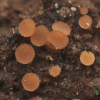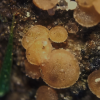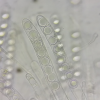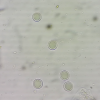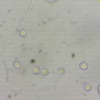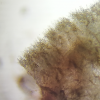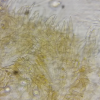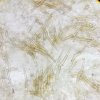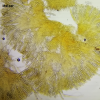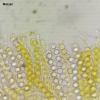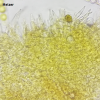
15-09-2021 12:41
Mirek GrycHello allDear forum members, are my suspicions cor

24-07-2022 14:01
 Zuzana Sochorová (Egertová)
Zuzana Sochorová (Egertová)
Hello, yesterday I collected this Mollisia.Ascospo

18-11-2012 21:36
ByrainI found this mold growing on a old and dried out A

23-07-2022 14:52
Elisabeth StöckliBonjour, Sur une branche aérienne de Picea abies

24-07-2022 10:25
 Stephen Martin Mifsud
Stephen Martin Mifsud
Hello, I recently found a mould growing on a wine

19-07-2022 08:14
Zuidland PeterHello all,Found today in a eucalyptus bushland in

20-07-2022 18:57
Bonsoir à tous et merci à Michel de m'avoir acce
Sphaerosporella ?
Ronald Morsink,
16-07-2022 23:13
I found these small ascomycetes in a dried up stream on sandy soil. They grow close to a slope so that they do not see sunlight during the day. They are about 2 to 4 mm in size.
It is very likely that charcoal residues have ended up in the soil at this location, but I have not been able to observe that with the eye, but it can be seen in the area 10 meters away in the woods.
The hymenium is light brown to almost pink, but that is probably due to the lack of light.
They have light brown bristles that are sept.
I didn't get a response with croziers on the asci, with melzers I get a yellow discoloration.
Spores: 12-14 µm, round and with a large oil drop.
Paraphyses with a thickened top
I think it is may be a Sphaerosporella brunnea, but as I'm not sure if there is charcoal residue in the substrate I'm not sure this is.
Can someone tell me more about that if possible ?
Kind regards,
Ronald
Nicolas VAN VOOREN,
17-07-2022 16:29

Re : Sphaerosporella ?
No doubt that your fungus is a Sphaerosporella (or Trichophaea if you accept this synonymy), but S. brunnea must be considered as a carbonicolous species. As it was not collected on such a substrate, it is probably another species.
So keep this collection preciously, it could be useful for a future study.
So keep this collection preciously, it could be useful for a future study.
Ronald Morsink,
18-07-2022 15:58
Re : Sphaerosporella ?
Dear Nicolas,
Thanks for your response and information.
Besides the fungus I did find rubbish such as bottles and caps that were burned,and a fireplace nearby (10 meters away in the forest). Not that this fungus grows on plastic, but that it may be possible that wood that has been burned has ended up in this place. but because the stream has drained a lot of water, the water probably carried the charcoal residue with it.
I think that's why I can't find charcoal residue where I found the fungus, but it's very likely that it is still present in the soil.
Is that a good possibility ?
I will keep the species well.
Thanks for your response and information.
Besides the fungus I did find rubbish such as bottles and caps that were burned,and a fireplace nearby (10 meters away in the forest). Not that this fungus grows on plastic, but that it may be possible that wood that has been burned has ended up in this place. but because the stream has drained a lot of water, the water probably carried the charcoal residue with it.
I think that's why I can't find charcoal residue where I found the fungus, but it's very likely that it is still present in the soil.
Is that a good possibility ?
I will keep the species well.
Thanks again.
Sincerely,
Ronald.

